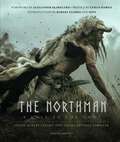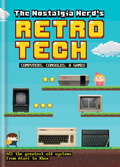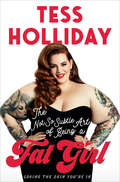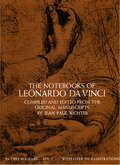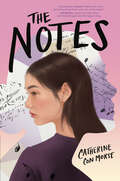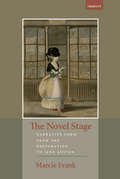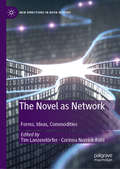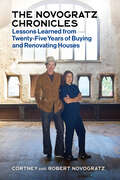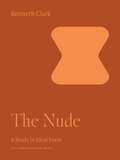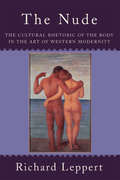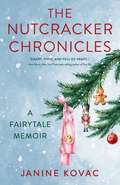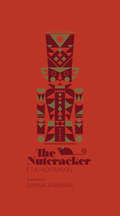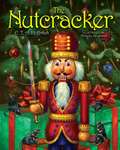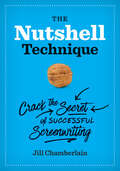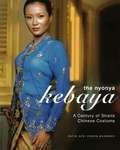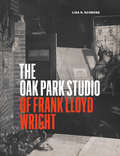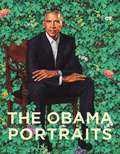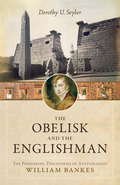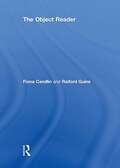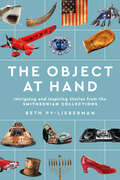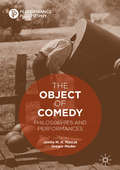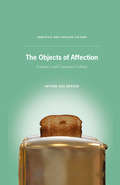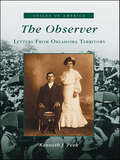- Table View
- List View
The Northman: A Call to the Gods
by Robert EggersThe Northman: A Call to the Gods is the official look at how this epic Viking revenge thriller was conceived, written, cast, and produced by acclaimed director Robert Eggers. Set against the ruthless backdrop of tenth-century Norse territory, The Northman is the a new epic Viking revenge thriller by acclaimed director Robert Eggers (The Witch [2015] and The Lighthouse [2019]), featuring an all-star cast including Alexander Skarsgård, Nicole Kidman, Ethan Hawke, Anya Taylor-Joy, Willem Dafoe, and Björk. Compiled from fascinating interviews with the cast and crew, inspiring storyboards, exclusive behind-the-scenes photographs—including the director&’s own firsthand account of his creative processes in writing and directing—The Northman: A Call to the Gods explores the cold and forbidding world of the Vikings, their customs, traditions, and relentless thirst for battle and vengeance that inspired Eggers to write this compelling Norse saga. Learn how the wardrobe department recreated the intricate chain mail armor and costumes of Viking berserkers and warriors; delve into the research behind the art department&’s visual inspiration for replicating the villages of Hrafnsey and Freysdalur; and get the inside scoop on the challenges the cast encountered when creating the iconic characters of Amleth, Olga, Queen Gurdrún, and the Seeress. The Northman: A Call to the Gods is the perfect companion for both film fans and anyone interested in Viking history and legends. PROFILE OF AN AWARD-WINNING DIRECTOR: Using acclaimed director Robert Eggers&’ own firsthand account, The Northman: A Call to the Gods delivers a revealing profile of his inspirations, and his creative process. EXCLUSIVE PHOTOGRAPHS: Explore dozens of photographs of the set, crew, director Robert Eggers, and the award-winning cast, including Alexander Skarsgård, Nicole Kidman, Ethan Hawke, Anya Taylor-Joy, Willem Dafoe, and Björk. GO BEHIND THE SCENES: Delve into never-before-seen storyboards and set designs that give a glimpse into the fascinating art and craft of filmmaking. PERFECT FOR FILM ENTHUSIASTS: The Northman: A Call to the Gods is the perfect gift for movie fans and anyone interested in Viking legend and lore.
The Nostalgia Entertainment Sourcebook: The Complete Resource Guide to Classic Movies, Vintage Music, Old Time Radio and Theatre
by Randy Skretvedt Jordan R. YoungA resource guide for finding the sounds and accoutrements that accompany the entertainment of the 1920s, 1930s, and 1940s. Fan clubs, festivals, museums, stores, societies and many other resources. No hobbyist should be without this book!
The Nostalgia Nerd's Retro Tech: Computer, Consoles & Games (Tech Classics)
by Peter LeighRemember what a wild frontier the early days of home gaming were? Manufacturers releasing new consoles at a breakneck pace; developers creating games that kept us up all night, then going bankrupt the next day; and what self-respecting kid didn't beg their parents for an Atari or a Nintendo? This explosion of computers, consoles, and games was genuinely unlike anything the tech world has seen before or since.This thoroughly researched and geeky trip down memory lane pulls together the most entertaining stories from this dynamic era, and brings you the classic tech that should never be forgotten.
The Not So Subtle Art of Being a Fat Girl: Loving the Skin You're In
by Tess HollidayA plus-size supermodel tells her powerful personal story and offers inspiration and tips to women everywhere to help them survive and thrive. Mom. Feminist. Plus size. Supermodel. Loud. Proud. Body Activist. Beautiful. Businesswoman. Homemaker. Cat owner. Funny. Outspoken. Wife. Daughters. Lover. Fighter. Survivor… Tess Holliday is many things and perfect is not one of them. But she loves her imperfections—after all, they&’ve formed the woman she is today. Tess&’s number one rule in life is to love yourself no matter who you are, what your faults may be, where you come from, or what dress size you wear! It&’s this discovery that has helped her through life—from being abused and bullied about her weight, to raising a kid alone and fending off social media trolls. Now here in this amusingly candid account, the woman at the forefront of the body positive movement—who has been credited with transforming the fashion industry—explains why you should be happy to make mistakes but how to properly learn from them, as well as how to love your imperfections and be comfortable in your own skin, no matter how much you have.&“[Tess&’s] determination and drive to take all the bricks life has thrown her way and build a life full of beautiful experiences…makes this book a page turner. You&’ll also be left with so many gems of wise advice, you&’ll be ready to not so subtly step into your greatness too.&”—Danielle Brooks, star of Orange is the New Black #effyourbeautystandards
The Notebooks of Leonardo da Vinci, Vol. 1 (Dover Fine Art, History of Art #1)
by Leonardo Da VinciScientist, painter, mechanical engineer, sculptor, thinker, city planner, storyteller, musician, architect — Leonardo da Vinci, builder of the first flying machine, was one of the great universal geniuses of Western civilization. His voluminous notebooks, the great storehouse of his theories and discoveries, are presented here in 1566 extracts that reveal the full range of Leonardo's versatile interest: all the important writings on painting, sculpture, architecture, anatomy, astronomy, geography, topography, and other fields are included, in both Italian and English, with 186 plates of manuscript pages and many other drawings reproduced in facsimile size.The first volume, which contains all of Leonardo's writings on aspects of painting, includes discussions of such basic scientific areas as the structure of the eye and vision, perspective, the science of light and shade, the perspective of disappearance, theory of color, perspective of color, proportions and movements of the human figure, botany for painters, and the elements of landscape painting. A section on the practice of painting includes moral precepts for painters and writings on composition, materials, and the philosophy of art. The second volume contains writings on sculpture, architecture (plans for towns, streets, and canals, churches, palaces, castles, and villas, theoretical writings on arches, domes, fissures, etc.), zoology, physiology (including his amazingly accurate theories of blood circulation), medicine, astronomy, geography (including has famous writings and drawings on the movement of water), topography (observations in Italy, France, and other areas), naval warfare, swimming, theory of flying machines, mining, music, and other topics.A selection of philosophical maxims, morals, polemics, fables, jests, studies in the lives and habits of animals, tales, and prophecies display Leonardo's abilities as a writer and scholar. The second volume also contains some letters, personal records, inventories, and accounts, and concludes with Leonardo's will. The drawings include sketches and studies for some of Leonardo's greatest works of art — The Last Supper, the lost Battle of Anghiari, The Virgin of the Rocks, and the destroyed Sforza monument.
The Notes
by Catherine Con MorseA reserved Chinese American teen at a Southern performing arts boarding school comes into her own under the tutelage of a glamorous new piano teacher. A moving coming-of-age-novel from a debut novelist about first love, adolescent angst, and academic pressures.&“Compellingly readable. Make room in the boarding-school book canon for a new classic.&” - Jeff Zentner, award-winning author of In the Wild Light and The Serpent King"A moving, highly virtuosic, and heart-rending portrait of an aspiring teen pianist trying to find her way...it made me feel seen." - Patricia Park, author of Imposter Syndrome and Other Confession of Alejandra Kim and What&’s Eating Jackie Oh?Claire Wu isn&’t sure that she has what it takes to become a successful concert pianist. It&’s the fear of every student at Greenwood School for the Performing Arts: becoming a washed-out performer who couldn't make it big. And Claire's no Rocky Wong, the ace pianist at their boarding school.Then Dr. Li shows up. She&’s like no other teacher at Greenwood: mysterious, sophisticated, fascinating. Under Dr. Li&’s tutelage, Claire works harder and dreams bigger than ever. And her crush Rocky finally seems interested. Maybe she&’ll even be "Chinese enough" to join the elusive Asian Student Society.Everything is falling into place until eerily personal notes about Claire&’s bond with Dr. Li appear. Claire starts to feel the pressure. But she isn't the only one. Everyone is feeling the strain. Especially Rocky, whose extreme perfectionism hides something more troubling.As the Showcase tension crescendos, Claire must decide if she&’s ready to sink or swim. Only then can she discover who she really is and learn if she&’s ready to give her all for a shot at greatness.The Notes is a powerful and poignant debut YA novel from award-winning writer Catherine Con Morse about dealing with academic pressures, falling in love for the first time, and finding yourself.
The Novel Stage: Narrative Form from the Restoration to Jane Austen (Transits: Literature, Thought & Culture 1650-1850)
by Marcie FrankMarcie Frank’s study traces the migration of tragicomedy, the comedy of manners, and melodrama from the stage to the novel, offering a dramatic new approach to the history of the English novel that examines how the collaboration of genres contributed to the novel’s narrative form and to the modern organization of literature. Drawing on media theory and focusing on the less-examined narrative contributions of such authors as Aphra Behn, Frances Burney, and Elizabeth Inchbald, alongside those of Samuel Richardson, Henry Fielding, and Jane Austen, The Novel Stage tells the story of the novel as it was shaped by the stage. Published by Bucknell University Press. Distributed worldwide by Rutgers University Press.
The Novel as Network: Forms, Ideas, Commodities (New Directions in Book History)
by Corinna Norrick-Rühl Tim LanzendörferThe Novel as Network: Forms, Ideas, Commodities engages with the contemporary Anglophone novel and its derivatives and by-products such as graphic novels, comics, podcasts, and Quality TV. This collection investigates the meaning of the novel in the larger system of contemporary media production and (post-)print culture, viewing the novel through the lens of actor network theory as a node in the novel network. Chapters underscore the deep interconnection between all the aspects of the novel, between the novel as a (literary) form, as an idea, and as a commodity. Bringing together experts from American, British, and Postcolonial Studies, as well as Book, Publishing, and Media Studies, this collection offers a new vantage point to view the novel in its multifacetious expressions today.
The Novogratz Chronicles: Lessons Learned from Twenty-Five Years of Buying and Renovating Houses
by Robert Novogratz Cortney NovogratzHusband and wife design duo Robert and Cortney Novogratz share their trade secrets and personal stories from over twenty-five years of buying, selling, and fixing up homes.Robert and Cortney Novogratz, stars of HGTV’s Home by Novogratz and Bravo’s 9 by Design, have transformed fabulous properties across the U.S. and around the world, including Hotel Dylan (Woodstock, NY), the Bungalow Hotel (Long Branch, NJ), and Timber Cove (Sonoma, CA), to name a few. They've also partnered with many celebrities and top retailers and had their work profiled in major national media outlets, from The New York Times to Architectural Digest, all while raising their family of seven children. They not only know how to run a successful and innovative design business but also how to balance work, family, and fun. The Novogratz Chronicles is their most intimate and personal book to date, taking readers on their journey from their first house renovation project in Chelsea in the 1990s to their latest home in Greenwich Village and projects in Los Angeles, Brazil, and the Berkshires. Eleven chapters explore and share their path to success, from thinking outside the box when financing, to building the right renovation team, to developing a design aesthetic and trusting your design instincts, interspersed with personal anecdotes and stories from their hands-on experiences. DIYers, HGTV fans, weekend warriors, and anyone interested in buying, selling, and renovating houses and spaces will love reading The Novogratz Chronicles and discovering the expertise that lies beyond their renowned how-to decorating prowess to inform and inspire their own renovation dreams and endeavors.
The Nude: A Study in Ideal Form (The A. W. Mellon Lectures in the Fine Arts #2)
by Kenneth ClarkA landmark study of the nude in art—from the ancient Greeks to Henry Moore—by a towering figure in art historyIn this classic book, Kenneth Clark, one of the most eminent art historians of the twentieth century, examines the ever-changing fashion in what constitutes the ideal nude as a basis of humanist form, from the art of the ancient Greeks to that of Renoir, Matisse, and Henry Moore. The Nude reveals the sensitivity of aesthetic theory to fashion, what distinguishes the naked from the nude, and just why the nude has played such an important role in art history. As Clark writes, “The nude gains its enduring value from the fact that it reconciles several contrary states. It takes the most sensual and immediately interesting object, the human body, and puts it out of reach of time and desire; it takes the most purely rational concept of which man is capable, mathematical order, and makes it a delight to the senses; and it takes the vague fears of the unknown and sweetens them by showing that the gods are like men and may be worshipped for their life-giving beauty rather than their death-dealing powers.”Please note: All images in this ebook are presented in black and white and have been reduced in size.
The Nude: The Cultural Rhetoric of the Body in the Art of Western Modernity
by Richard LeppertThe Nude explores some of the principal ways that paintings of the nude function in the conflicted terrain of culture and society in Europe and America from the fifteenth through twentieth centuries, as set against questions about human sexuality that emerge around differences of class, gender, age, and race. Author Richard Leppert relates the visual history of how the naked body intersects with the foundational characteristics of what it is to be human, measured against a range of basic emotions (happiness, delight, and desire; fear, anxiety, and abjection) and read in the context of changing social and cultural realities. The bodies comprising the Western nude are variously pleasured or tormented, ecstatic or bored, pleased or horrified. In short, as this volume amply demonstrates, the nude in Western art is a terrain on whose surface is written a summation of Western history: its glory but also its degradation.
The Nutcracker Chronicles: A Fairytale Memoir
by Janine KovacPerfect for The Nutcracker holiday market and fans of work/life balance books, this memoir of a ballet dancer–turned–literary curator shares the real-life journey of a dancer, wife, and mother.The Nutcracker Chronicles, a modern twist on the beloved holiday ballet, intertwines the story of Clara and her nutcracker prince with the true-life stories that unfold backstage. The curtain rises on Ballet El Paso&’s production of The Nutcracker, where young Janine Kovac is cast as Fritz, the boy who breaks the nutcracker. Her director is Ingeborg Heuser, a German woman who once performed for Hitler and who peppers her teaching with insults like, &“Why can&’t you just dance like a pretty girl?&” At least it&’s better than &“You look like a cow on ice skates,&” which is what the other girls hear daily. Onstage, Janine wins the battle and embarks on a voyage through a snowy forest to the Land of the Sweets, where she serves as spectator to a beautiful dance. She also travels offstage, leaving El Paso to study at San Francisco Ballet before landing a job in Iceland and returning to California, where she rises through the ranks from soldier to snowflake to candy soloist. Eventually, however, she is relegated to watching other people dance—her husband, her children, her students—and her claim to the spotlight is replaced by the quest to find joy in her new roles.
The Nutcracker: A Pop-up Adaptation Of E.t.a. Hoffmann's Original Tale (The\classic Edition Ser. #10)
by E. T. Hoffmann Sanna AnnukkaHoffmann's classic Christmas fairy tale, immortalized by Tchaikovsky's ballet, is brought to life by the gorgeous contemporary artwork of Finnish illustrator Sanna Annukka, and is the perfect holiday gift for adults and children alike. The Nutcracker captures, better than any other story, a child's wonder at Christmas.On Christmas Eve, Fritz and Marie excitedly await the arrival of Godfather Drosselmeier and the marvelous gifts he brings for them every year. When Marie discovers a rather curious nutcracker doll amongst the presents, she suddenly finds herself caught up in an age-old battle and ultimately transported to a magical world of sugar-frosted castles, chocolate kings, and true love. This cloth-bound edition combines the charm of Hoffmann's original eighteenth-century tale with the freshness of Sanna Annukka's gorgeous illustrations in this striking keepsake edition that will be treasured and reread by you and your loved ones for years to come.
The Nutcracker: The Original Holiday Classic
by E. T. HoffmanOn Christmas Eve, seven-year-old Marie and her eight-year-old brother Fritz anxiously await their Christmas gifts. When their godfather—a clock builder and toymaker—arrives, he unveils an ornate clockwork castle adorned with whirling figurines for the children. While Fritz plays with the clock, Marie is taken aside and given another gift—a nutcracker. After Fritz grabs the nutcracker from Marie and breaks its jaw by cracking too many nuts, their playtime ends and they head off to bed. When the clock strikes twelve, magic makes its way into this enduring tale and an epic battle ensues. This timeless classic, featuring all-new full-color and black-and-white illustrations by artist Arkady Roytman and abridged text by Gina Gold, is the perfect story to get anyone in the holiday spirit!
The Nutshell Technique: Crack the Secret of Successful Screenwriting
by Jill ChamberlainA veteran Hollywood script consultant unlocks the secrets of storytelling in this &“clever, fresh way of analyzing structure&” (Creative Screenwriting magazine). Veteran script consultant Jill Chamberlain knows that most first-time screenwriters don&’t understand how to tell a story. These writers may have snappy dialogue, interesting characters, and clever plot devices—but what they deliver isn&’t a story. It&’s a situation. In order to explain the difference, Chamberlain created the Nutshell Technique, a method whereby writers identify eight dynamic, interconnected elements that are required to successfully tell a story. In this book, Chamberlain uses easy-to-follow diagrams (&“nutshells&”) to explain how the Nutshell Technique can make or break a film script. She takes readers step-by-step through thirty classic and contemporary movies, showing how such dissimilar screenplays as Casablanca, Chinatown, Pulp Fiction, Little Miss Sunshine, Juno, and Argo all have the same system working behind the scenes. She then teaches readers how to apply these principles to their own screenwriting.
The Nutshell Technique: Crack the Secret of Successful Screenwriting
by Jill ChamberlainA veteran Hollywood script consultant unlocks the secrets of storytelling in this &“clever, fresh way of analyzing structure&” (Creative Screenwriting magazine). Veteran script consultant Jill Chamberlain knows that most first-time screenwriters don&’t understand how to tell a story. These writers may have snappy dialogue, interesting characters, and clever plot devices—but what they deliver isn&’t a story. It&’s a situation. In order to explain the difference, Chamberlain created the Nutshell Technique, a method whereby writers identify eight dynamic, interconnected elements that are required to successfully tell a story. In this book, Chamberlain uses easy-to-follow diagrams (&“nutshells&”) to explain how the Nutshell Technique can make or break a film script. She takes readers step-by-step through thirty classic and contemporary movies, showing how such dissimilar screenplays as Casablanca, Chinatown, Pulp Fiction, Little Miss Sunshine, Juno, and Argo all have the same system working behind the scenes. She then teaches readers how to apply these principles to their own screenwriting.
The Nyonya Kebaya
by Datin SeriThis longtime Malaysian fashion icon was originally a long, straight, Arab-inspired top of plain woven cotton. <P><P>The Nyonyas, the women of the early Peranakan community, gradually transformed it into a shapely, embroidered, translucent blouse, fastened with a set of chained brooches and worn with a matching hand-drawn batik sarong.Sheer, romantic, alluring, yet sedate, the designs of Nyonya kebaya crosses several generations and cultures.This book showcases the collection of Datin Seri Endon Mahmood, wife of the Prime Minister of Malaysia.
The Oak Park Studio of Frank Lloyd Wright (Chicago Architecture And Urbanism Ser.)
by Lisa D. SchrenkBetween 1898 and 1909, Frank Lloyd Wright’s residential studio in the idyllic Chicago suburb of Oak Park served as a nontraditional work setting as he matured into a leader in his field and formulized his iconic design ideology. Here, architectural historian Lisa D. Schrenk breaks the myth of Wright as the lone genius and reveals new insights into his early career. With a rich narrative voice and meticulous detail, Schrenk tracks the practice’s evolution: addressing how the studio fit into the Chicago-area design scene; identifying other architects working there and their contributions; and exploring how the suburban setting and the nearby presence of Wright’s family influenced office life. Built as an addition to his 1889 shingle-style home, Wright’s studio was a core site for the ideological development of the prairie house, one of the first truly American forms of residential architecture. Schrenk documents the educational atmosphere of Wright’s office in the context of his developing design ideology, revealing three phases as he transitioned from colleague to leader. This heavily illustrated book includes a detailed discussion of the physical changes Wright made to the building and how they informed his architectural thinking and educational practices. Schrenk also addresses the later transformations of the building, including into an art center in the 1930s, its restoration in the 1970s and 80s, and its current use as a historic house museum. Based on significant original and archival research, including interviews with Wright’s family and others involved in the studio and 180 images, The Oak Park Studio of Frank Lloyd Wright offers the first comprehensive look at the early independent office of one of the world’s most influential architects.
The Obama Portraits
by Richard Powell Dorothy Moss Taína Caragol Kim SajetA richly illustrated celebration of the paintings of President Barack Obama and First Lady Michelle Obama From the moment of their unveiling at the National Portrait Gallery in early 2018, the portraits of Barack and Michelle Obama have become two of the most beloved artworks of our time. Kehinde Wiley's portrait of President Obama and Amy Sherald's portrait of the former first lady have inspired unprecedented responses from the public, and attendance at the museum has more than doubled as visitors travel from near and far to view these larger-than-life paintings. After witnessing a woman drop to her knees in prayer before the portrait of Barack Obama, one guard said, "No other painting gets the same kind of reactions. Ever." The Obama Portraits is the first book about the making, meaning, and significance of these remarkable artworks.Richly illustrated with images of the portraits, exclusive pictures of the Obamas with the artists during their sittings, and photos of the historic unveiling ceremony by former White House photographer Pete Souza, this book offers insight into what these paintings can tell us about the history of portraiture and American culture. The volume also features a transcript of the unveiling ceremony, which includes moving remarks by the Obamas and the artists. A reversible dust jacket allows readers to choose which portrait to display on the front cover.An inspiring history of the creation and impact of the Obama portraits, this fascinating book speaks to the power of art—especially portraiture—to bring people together and promote cultural change.Published in association with the Smithsonian's National Portrait Gallery, Washington, DC
The Obelisk and the Englishman
by Dorothy U. SeylerWilliam John Bankes (1786-1855) was a pioneer in the nascent study of the language, history, and civilization of ancient Egypt. At the Abydos Temple he discovered the King List -- a wall of cartouches listing Egyptian kings in chronological order -- which was vital to the decoding of Egyptian hieroglyphs. At Philae he uncovered a fallen obelisk, which he arranged to be transported back to England. And in modern-day Jordan he was the first European to make sketches and site plans of the "lost" city of Petra.Bankes's life was rich and full, and his discoveries have proven to be quite valuable and influential. But, living in an era when homosexuality was a capital offense, he was persecuted for being gay and threatened with imprisonment and execution. His decision to travel and pursue his love of art and architecture went against his father's wishes that he follow in his footsteps and become a politician. Despite such obstacles, Bankes's pioneering work on ancient temples and artifacts now enriches the knowledge of modern Egyptologists, and his art collection and decorative talents can be enjoyed by those who visit his home, a National Trust estate -- with the obelisk from Philae still raised on the south lawn.Enhanced by many of Bankes's drawings and paintings, this engaging story is full of vivid detail about the beginnings of Egyptology, Regency England, and a fascinating individual, and it sets the record straight about Bankes's crucial role in setting the stage for the work of later scholars.From the Hardcover edition.
The Object Reader (In Sight: Visual Culture)
by Raiford Guins Fiona CandlinThis unique collection frames the classic debates on objects and aims to generate new ones by reshaping the ways in which the object can be taught and studied, from a wide variety of disciplines and fields. The Object Reader elucidates objects in many of their diverse roles, dynamics and capacities. Precisely because the dedicated study of objects does not reside neatly within a single discipline, this collection is comprised of numerous academic fields. The selected writings are drawn from from anthropology, art history, classical studies, critical theory, cultural studies, digital media, design history, disability studies, feminism, film and television studies, history, philosophy, psychoanalysis, social studies of science and technology, religious studies and visual culture. The collection, composed of twentieth and twenty-first century writing also seeks to make its own contribution through original work, in the form of twenty-five short 'object lessons' commissioned specifically for this project. These new and innovative studies from key writers across a range of disciplines will enable students to look upon their surroundings with trained eyes to search out their own 'object studies'.
The Object at Hand: Intriguing and Inspiring Stories from the Smithsonian Collections
by Beth Py-LiebermanFrom Dorothy's ruby slippers to a speech that saved Teddy Roosevelt from assassination, this authoritative guide delivers in-depth reportage on the history of remarkable objects from the Smithsonian's collectionsFor American history, pop culture, and museum enthusiastsWith charm and exuberance, The Object at Hand presents a behind-the-scenes vantage point of the Smithsonian collections. Veteran Smithsonian magazine editor Beth Py-Lieberman weaves together adaptations of the magazine's extensive and compelling coverage and interviews with scholars, curators, and historians to take readers on an unforgettable journey through the Smithsonian museums.Objects are grouped into the themes audacity, utopia, fierce, haunting, deception, lost, desire, triumph, scale, optimism, playful, rhythm, and revealing to engage with the emotional dimensions of each object, how they relate to each other, and how they fit into the larger American story. A sampling includes: The Star-Spangled Banner Frida Kahlo's love letter to Diego RiveraAmelia Earhart's Lockheed Vega 5BNat Turner's BibleAn AIDS quilt panel honoring Roger Gail LyonA signpost from the Standing Rock protest A glass-plate portrait of Abraham Lincoln Life-sized model of a MegalodonThe Hope DiamondChuck Berry's CadillacPortrait of Henrietta LacksPy-Lieberman reflects on the profound connections between even outwardly dissimilar objects, and offers insight and stories from Smithsonian experts. The book explores artworks, scientific specimens, historical artifacts, airplanes, spacecraft, plants, and so much more, contemplating how each item represents different facets of humanity and resonates with cultural meaning in surprising ways. Whimsical, affecting, and insightful, The Object at Hand offers an intimate and exclusive tour of the Smithsonian collections.
The Object of Comedy: Philosophies and Performances (Performance Philosophy)
by Jamila M. H. Mascat Gregor ModerWhat is the object of comedy? What makes us laugh and why? Is comedy subversive, restorative or reparative? What is at stake politically, socially and metaphysically when it comes to comedic performances? This book investigates not only the object of comedy but also its objectives – both its deliberate goals and its unintended side effects.In researching the object of comedy, the contributions gathered here encounter comedy as a philosophical object: instead of approaching comedy as a genre, the book engages with it as a language, a medium, an artifice, a weapon, a puzzle or a trouble, a vocation and a repetition. Thus philosophy meets comedy at the intersection of various fields (e.g. psychoanalysis, film studies, cultural studies, and performance studies) –regions that comical practices and theories in fact already traverse.
The Objects of Affection: Semiotics and Consumer Culture (Semiotics and Popular Culture)
by A. BergerIn this book, pre-eminent semiotician Arthur Asa Berger decodes the meanings of common objects of consumption and their perceived 'sacredness' in consumerist cultures. Using semiotic theory, consumer culture is dissected in new and fascinating ways.
The Observer: Letters from Oklahoma Territory (Voices of America)
by Kenneth J. PeekR.H. Wessel was the owner, editor, and publisher of the Frederick Enterprise / Frederick Press, and a leading citizen from the day he first came to Frederick, Oklahoma, in 1902 until his death in 1956. He is best known for his column "The Observer," for which this book is titled. He left behind a considerable legacy of his adventurous life through letters, photographs, documents, and historic files. His experiences in Lawton during the 1901 Land Lottery and the following homestead years in Frederick are covered in this book.As a newspaperman, with a love for telling a story, his letters are an incredible documentation of life on the Oklahoma frontier, as well as his love story by mail with Margaret Scow, the bride he brought to Oklahoma after "proving up" on his homestead and obtaining his own newspaper.
